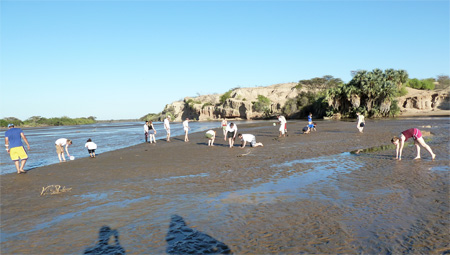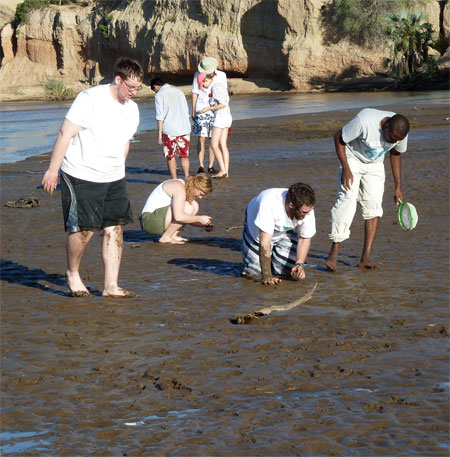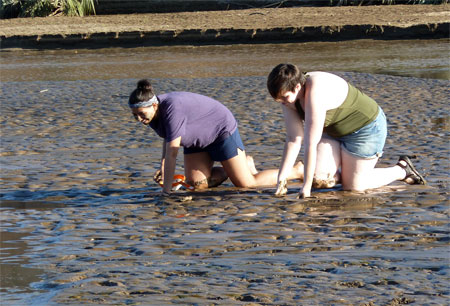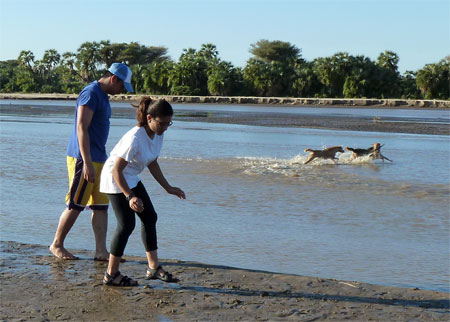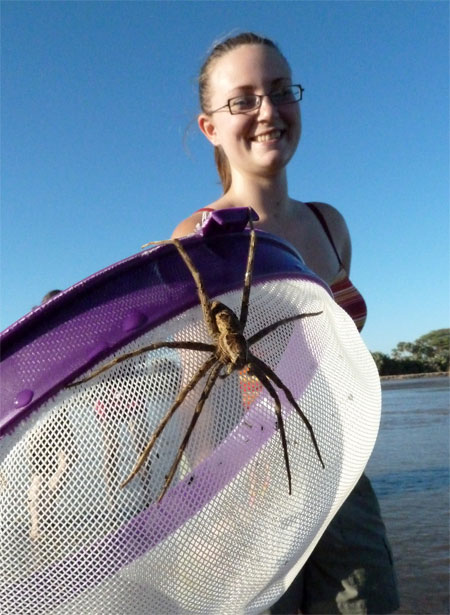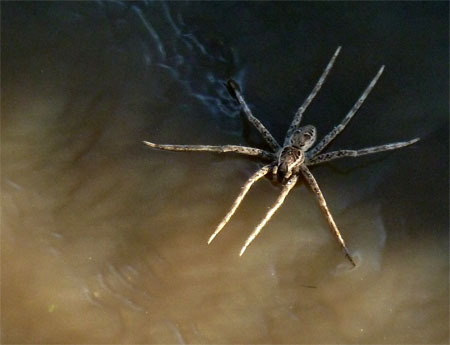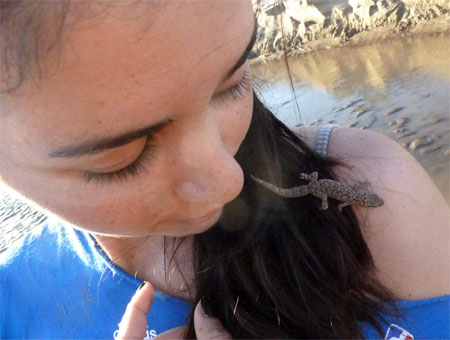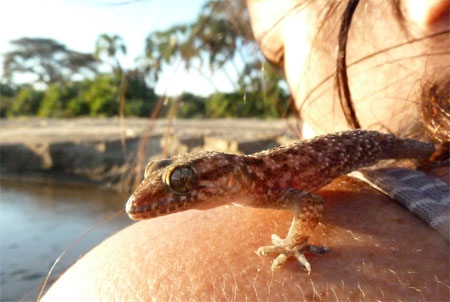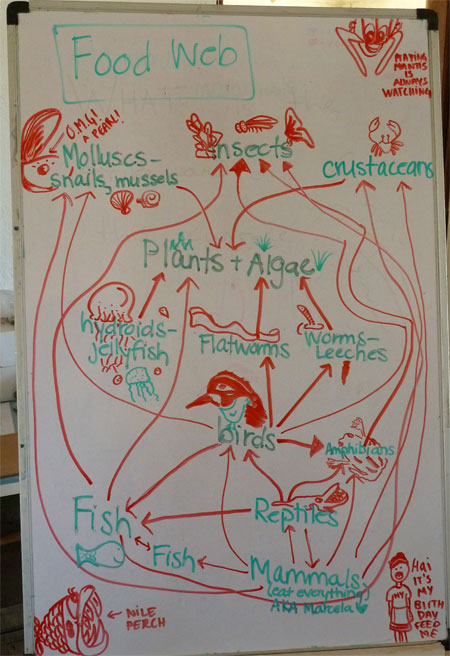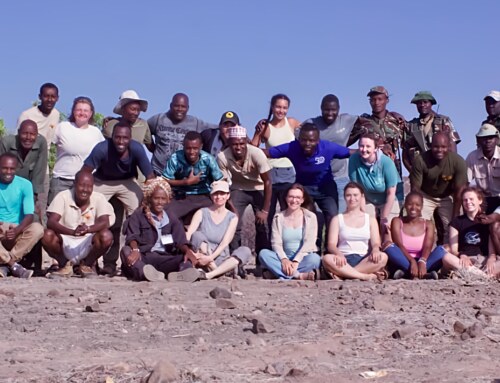The first module of the Turkana Basin Institute of Ecology is just coming to and end. We spent a couple of days this week learning about and exploring the aquatic habitat of the Turkwel River next to TBI.
One of the amazing things was both how tough life can be in the river. Organisms have to cope with fluctuating water levels, changes in temperature, fast and slow moving water as well as finding sufficient oxygen.
We focused on different parts of the river, but as the Turkwel is currently quite low as it is the middle of the dry season, most of our sampling was done on the mud-flats.While this habitat may not seem that exciting, it actually is a very important component of aquatic life. Films of algae feed and harbor innumerable insect larvae and specialised creatures that make a living the the rich, wet mud.
Here are some photos of the students at work:
One of the interesting species we were looking for was a species of semi-aquatic grasshopper that lives on algae on the mud-flats. They proved extremely agile at leaping away and were fairly small so the students had to get down in the mud to locate them…
One incredible adaptation of the Fishing Spider is it’s ability to walk on the surface of the water. Water-repellant hairs on it’s legs allow it to do this. We released the Fishing Spider and watched it smoothly skate across the surface using it’s middle legs for rowing and front and hind legs as outriggers for stability.

